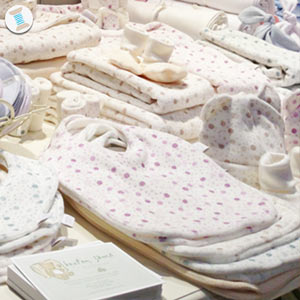Craft Storage and Organization Tips
Here are five craft storage tips to make your work space well organized, functional and pretty and help you to make more efficient use of your studio time.
When your craft studio is organized:
- You won't waste time looking for materials
- You will have less wasted inventory
- You'll know exactly what raw materials you have on hand, so you'll know when you need to re-order and you won't get caught and lose sales because you're out of materials
5 Steps to Get Your Studio and Your Stash Organized and Under Control
I earn a commission for purchases made through links on this page.
To learn more, please see my disclosure.
1. Get Out all of Your Tools and Supplies and Sort Them
Sorting and assessing what you have is an important first step in craft room organization.
Most people make the mistake of running out to the store and buying containers before assessing what they have. If you haven't sorted through your stash, how will you know what kind of craft storage you really need?
You can sort your tools and supplies in any way that makes sense to you. You may choose to sort based on your typical work flow, that is, put all tools and equipment together that you use at one stage of creating your items. Or, you may find it more helpful to sort your tools and equipment by type, color, category or based on special storage requirements.
2. Get Rid of Anything You Know You Won't Use
While you're sorting your tools and equipment, be sure to create a pile of things you know you will not use.
It's not easy to part with items in your stash, but if it's cluttering up your work space or your craft storage space, and you know you won't use it, then it's not doing you any good.
You can get rid of unused craft supplies by selling them on eBay or Etsy or, if you participate in a craft forum, you may be able to trade them for something you will use in one of the swaps that are commonly organized on craft forums.
3. Find a Home for What's Left
Now that you know what tools and supplies you need to store, and the way you want it all sorted, find a home for everything.
Determine how you want and/or need to store your supplies.
Determine whether you want items tucked away, or easy to see and access. Be sure to consider special storage requirements; if a bottle of resin must be stored upright, be sure to put it on a shelf that's tall enough to accommodate that requirement.
Consider safety.
Put any sharp objects or chemicals up out of the way of kids and pets.
Take into account how frequently you use items.
Anything that is used on a regular basis should be easy to access.
The space between waist height and eye level is prime real estate when it comes to storage. Try to store your most used items here. Anything you use less frequently can be stored on a higher shelf or, if it's heavy, closer to the ground.
Plan some extra space.
It's a fair bet that you'll acquire more supplies and tools over time, so plan more storage space than you need.
4. Buy Containers as Needed
Now you're finally ready to buy containers for your craft storage needs.
Storing your grouped items in containers (as opposed to leaving them all loose on a shelf) will help you to maintain your craft room organization system.
Shapes punched out and attached to pockets
make it easy to find and replace punches
Take a look at your groups of tools and raw materials as well as the locations where you want to store these items and determine the best size and type of containers for each group of items.
As you consider what types of containers you need, take into account the ways you use your raw materials and tools as well as the way you work.
If, for example, you're inspired by the colors and patterns on your raw materials, you'll want containers that allow you to see your raw materials. If you use raw materials that can be damaged by exposure to sunlight or air, you'll need containers that protect those items.
Make a list with the number and types of containers you'll need as well as the dimensions and purchase anything you need.
Once you have everything neatly stored in their proper containers, be sure to label all of the containers so you'll know at a glance where things are, and you will be less tempted to toss things that don't belong into your newly organized containers.
5. Maintain Your New System
Keep your craft room organization system working by putting things away in their proper places (this is where the labels help) when you're finished working.
As you bring new items into your craft room, determine whether they fit and whether they should be stored with an existing group of items or if you need to create a new storage place (this is why you planned for extra space in step 3) to store your new items.





New! Comments
Have your say about what you just read! Leave me a comment in the box below.